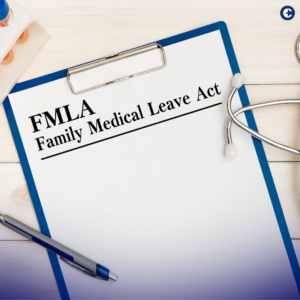The Family and Medical Leave Act (FMLA) stands as a pivotal law in the United States, offering job protection and unpaid leave for certain family and medical reasons. Today, we’re delving into the essentials of FMLA, addressing common queries, and outlining both employer and employee responsibilities.
Understanding FMLA
FMLA affords employees up to 12 weeks of unpaid, job-protected leave annually for specified family and medical circumstances. This regulation ensures the balance between workplace demands and employee rights, mandating the continuation of group health benefits during the leave period.
The Limits of FMLA
A common question is whether FMLA leave can be extended beyond the 12-week allotment. The answer is straightforward: no, it cannot. This period is designed to balance the needs of both parties without offering extensions.
Managing Benefits During FMLA
Employees on FMLA leave face the question of how to maintain their benefits. Options include retroactive payments upon return or advance payment before receiving benefits. Employers, facing non-payment of premiums, can choose to terminate health coverage after a 30-day grace period and due notification or keep the employee on the plan, assuming the cost if the employee does not return. Notably, losing health coverage due to job departure while on FMLA triggers a qualifying event under COBRA, enabling continuation coverage.
Preventing FMLA Abuse
To mitigate abuse, employers can require documentation, enforce call-in procedures, and mandate the use of vacation time first. These measures help ensure FMLA is used as intended, supporting those genuinely in need.
Who’s Covered?
Not all employers are bound by FMLA requirements. Eligibility criteria for employers include private sector entities with 50 or more employees, all public agencies, and public and private elementary and secondary schools, regardless of employee numbers.

Employee Eligibility for FMLA
To qualify for FMLA, employees must have worked for a covered employer for at least 12 months, logging a minimum of 1,250 hours of service in the year preceding the leave. Special rules apply to school employees, particularly around the academic calendar’s scheduling constraints.
Key Considerations
Both parties have responsibilities under FMLA. Employers must inform staff about their FMLA rights, while employees should notify their employer in a timely manner about their need for leave. Upon return, employees are entitled to their original job or an equivalent position. Compliance is critical, and a benefits broker can provide invaluable assistance in navigating the complexities of FMLA.
Conclusion:
FMLA is a critical safety net for employees facing personal or family health crises, offering necessary time off without fear of job loss. For employers, understanding and correctly administering FMLA is vital to maintaining a compliant and supportive workplace. For more detailed guidance on FMLA and how it applies to your situation, visit our website or contact a Cosmo representative for further assistance.



